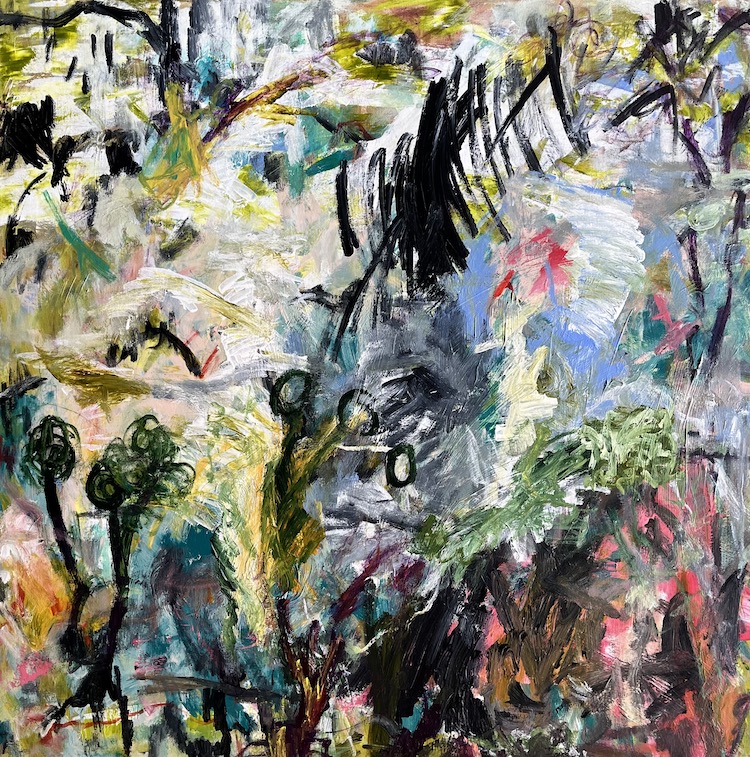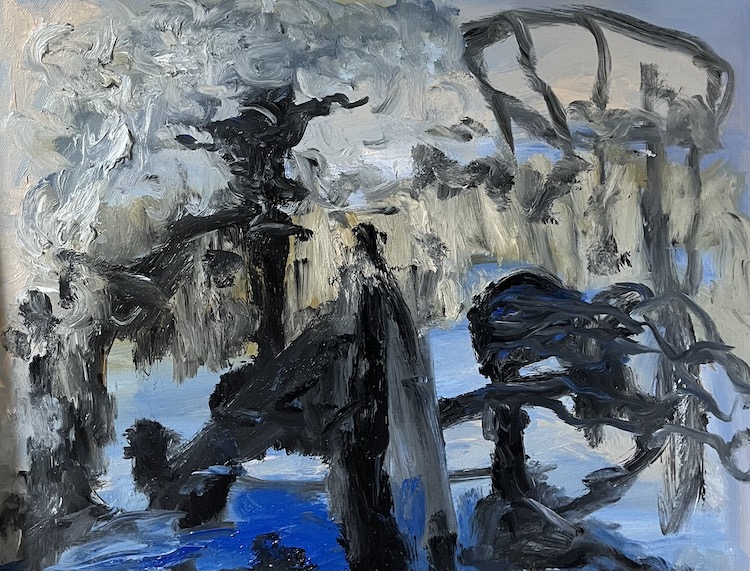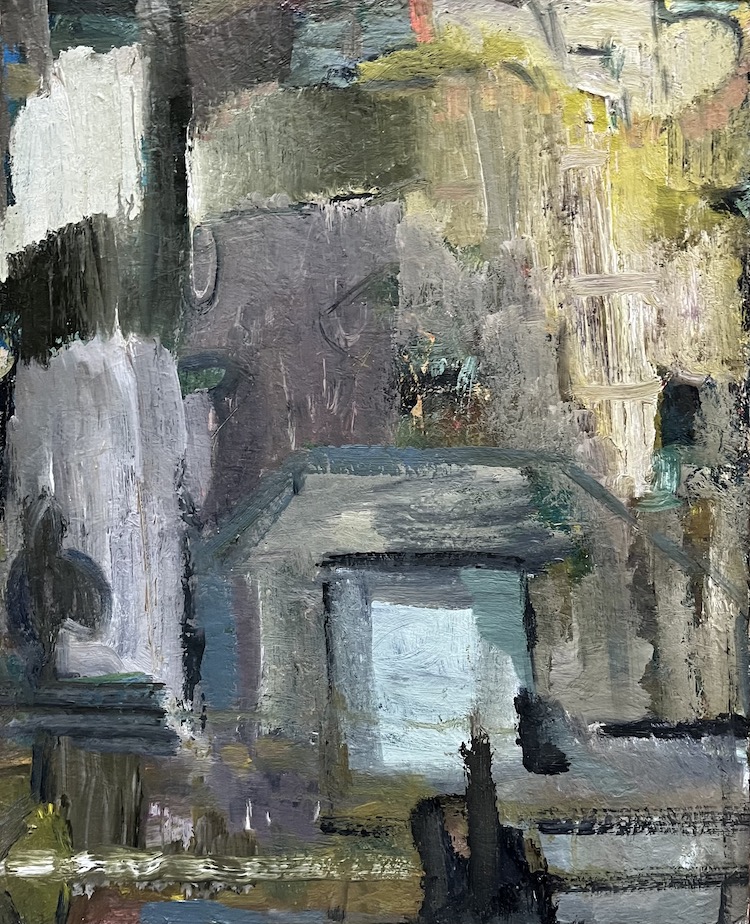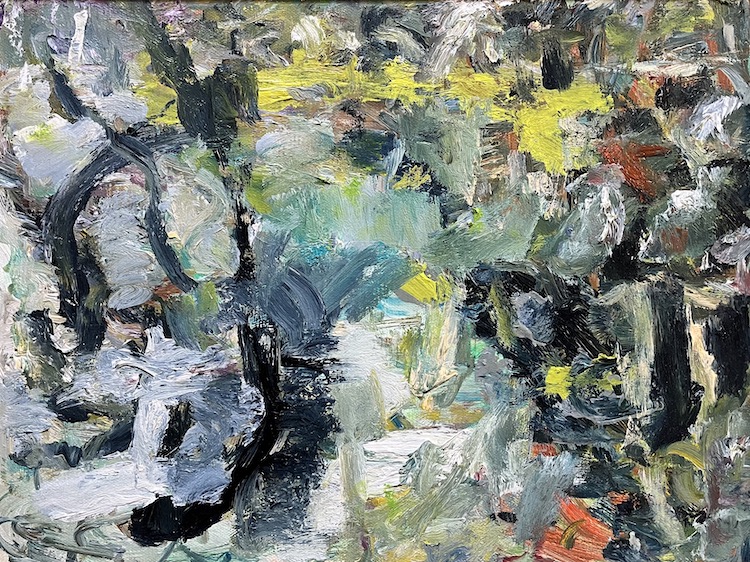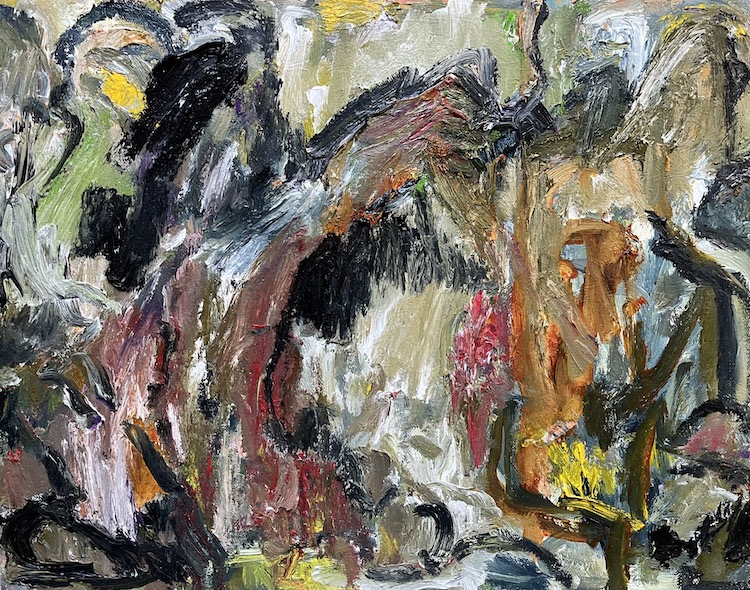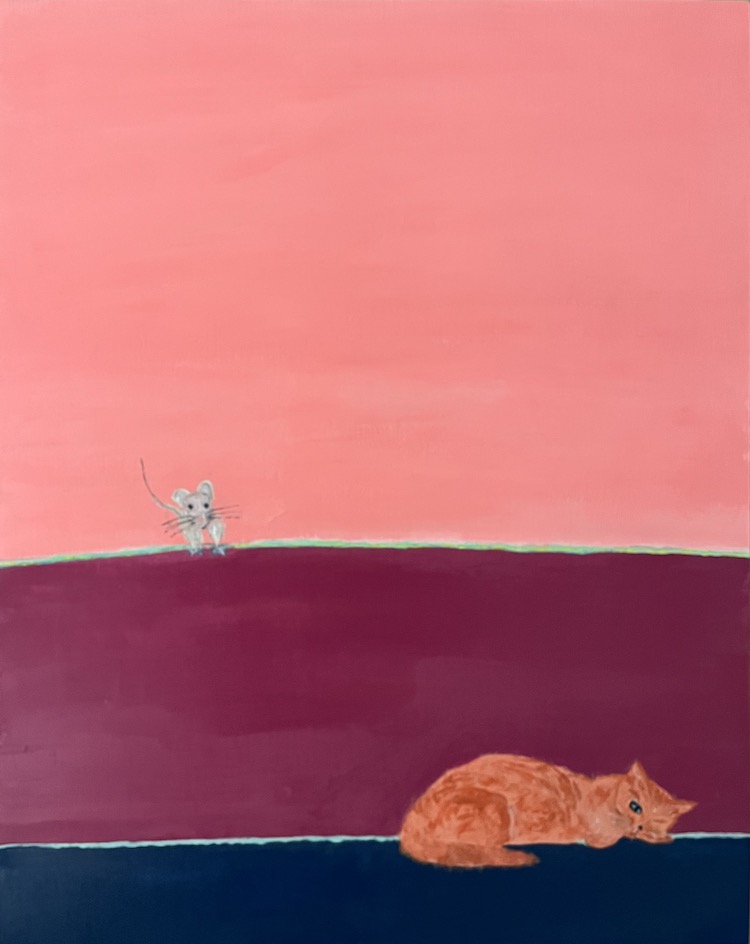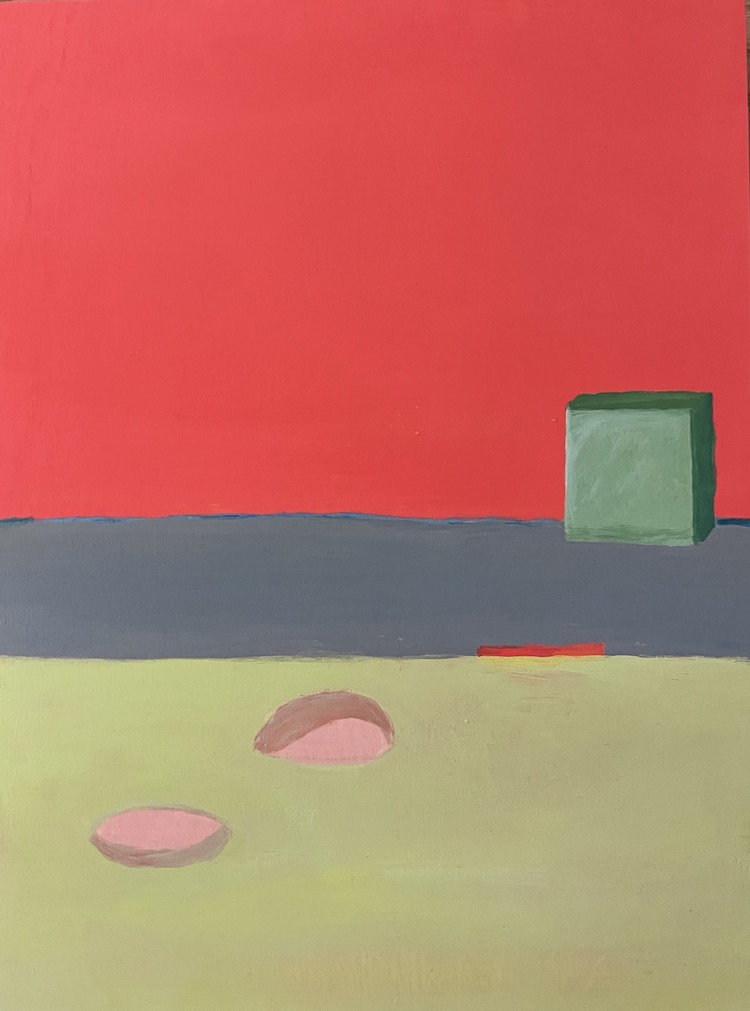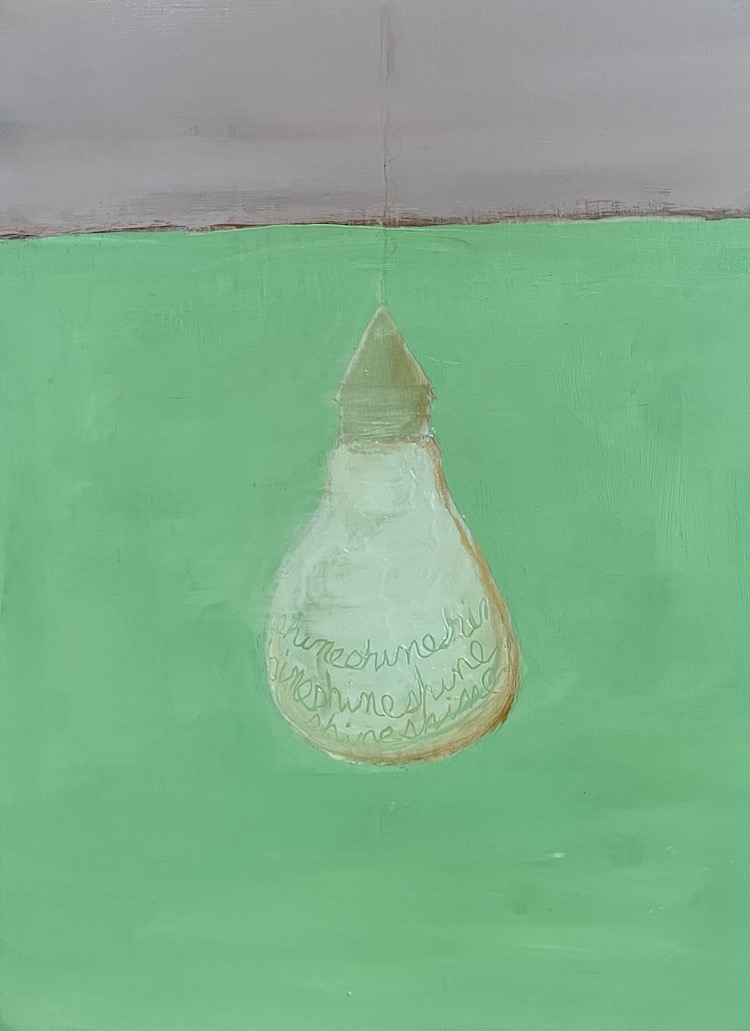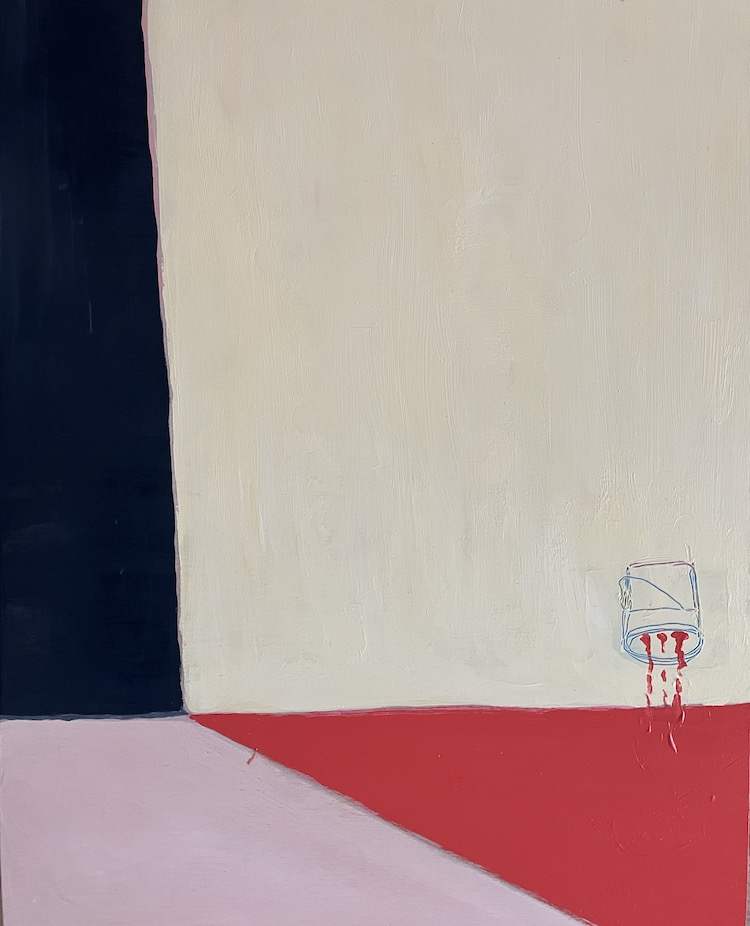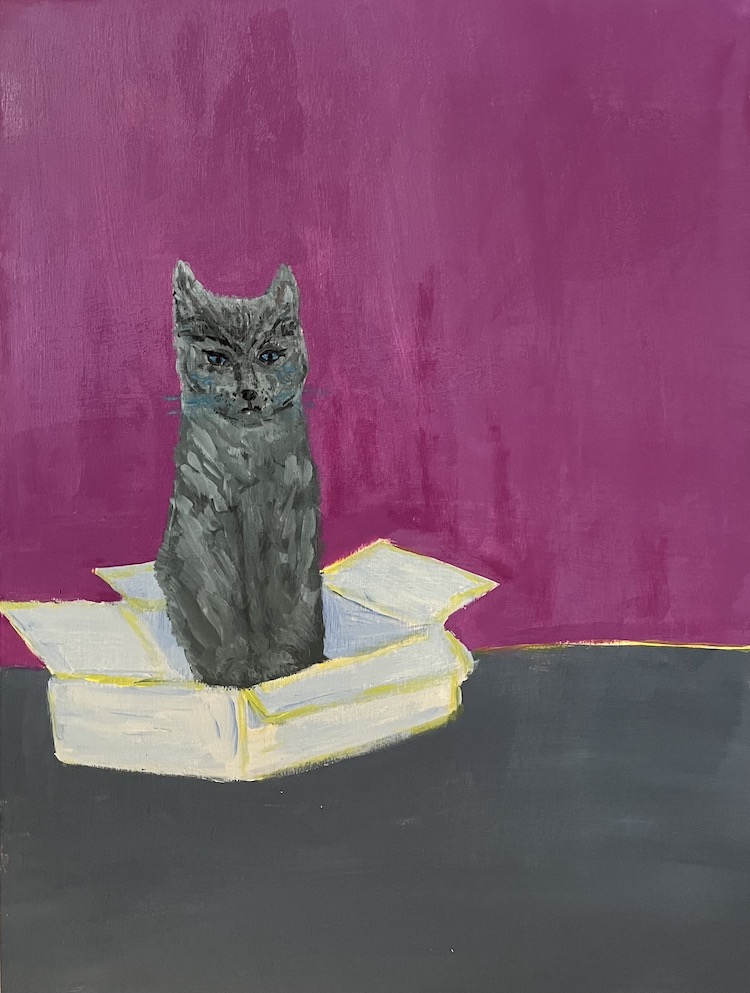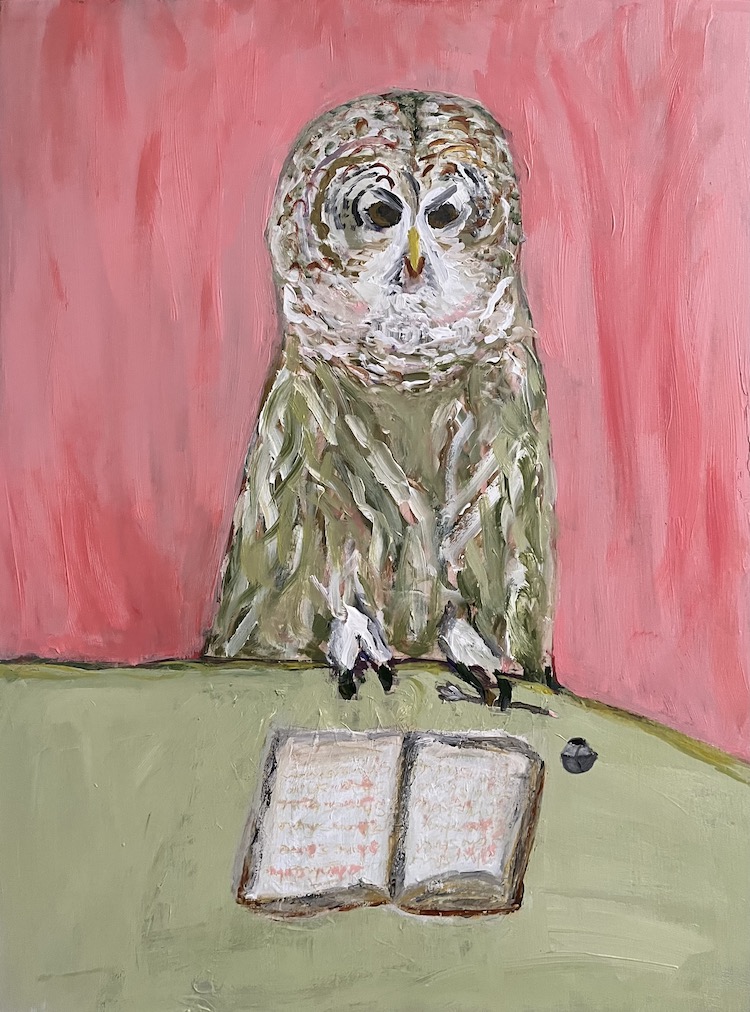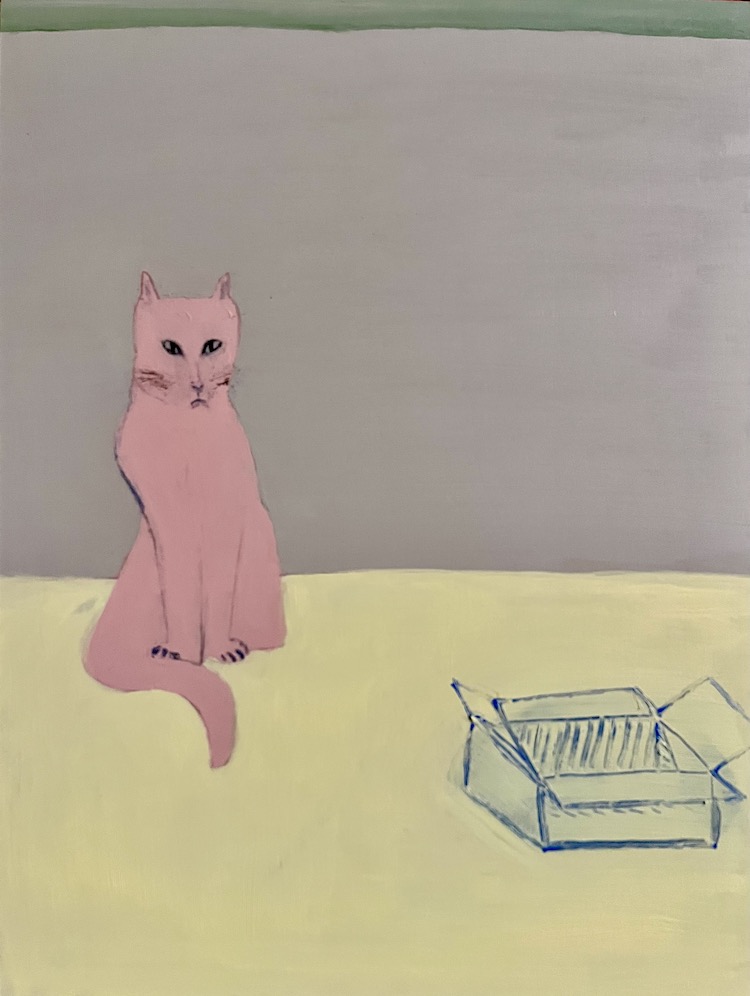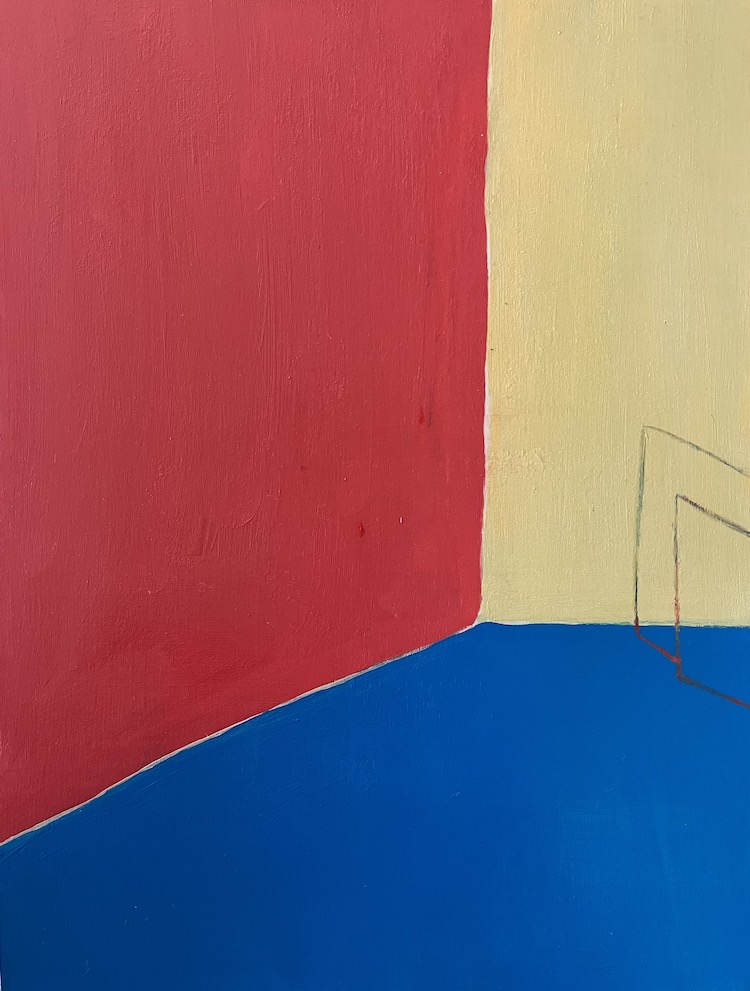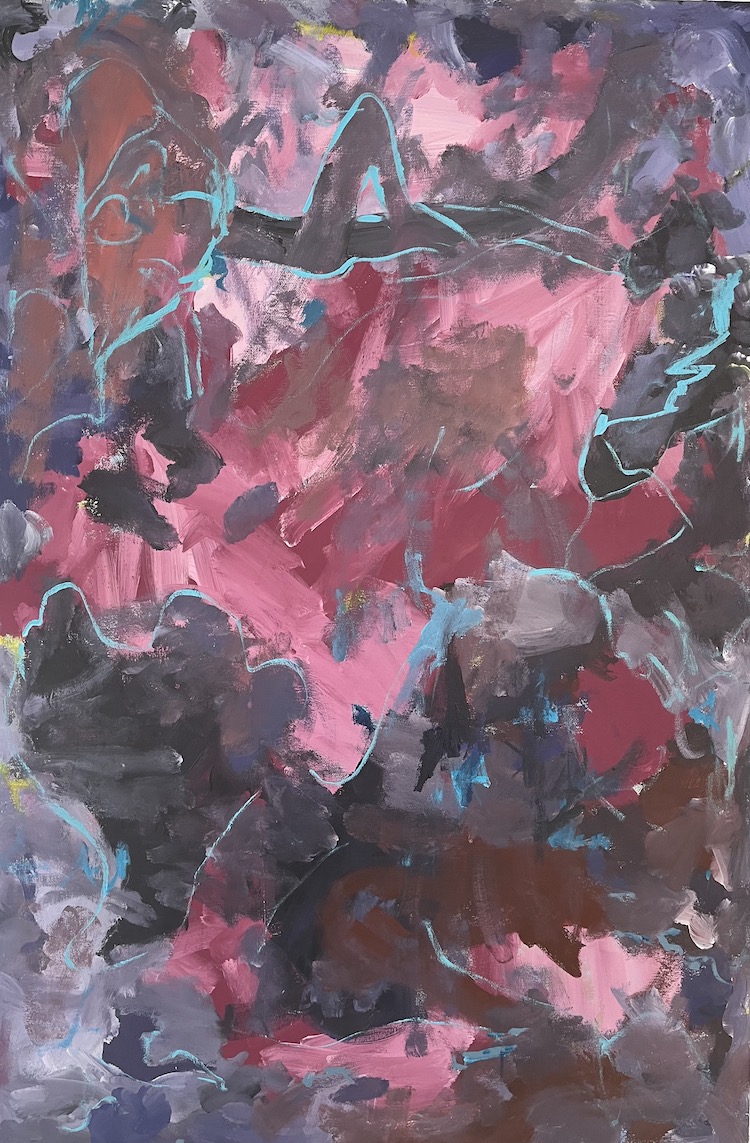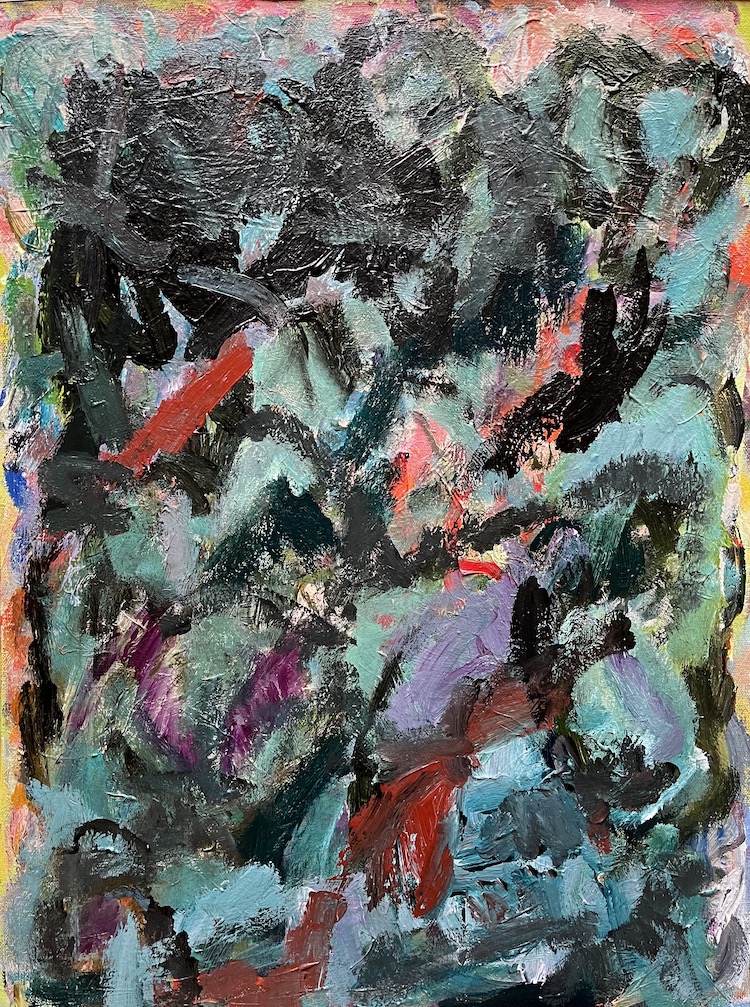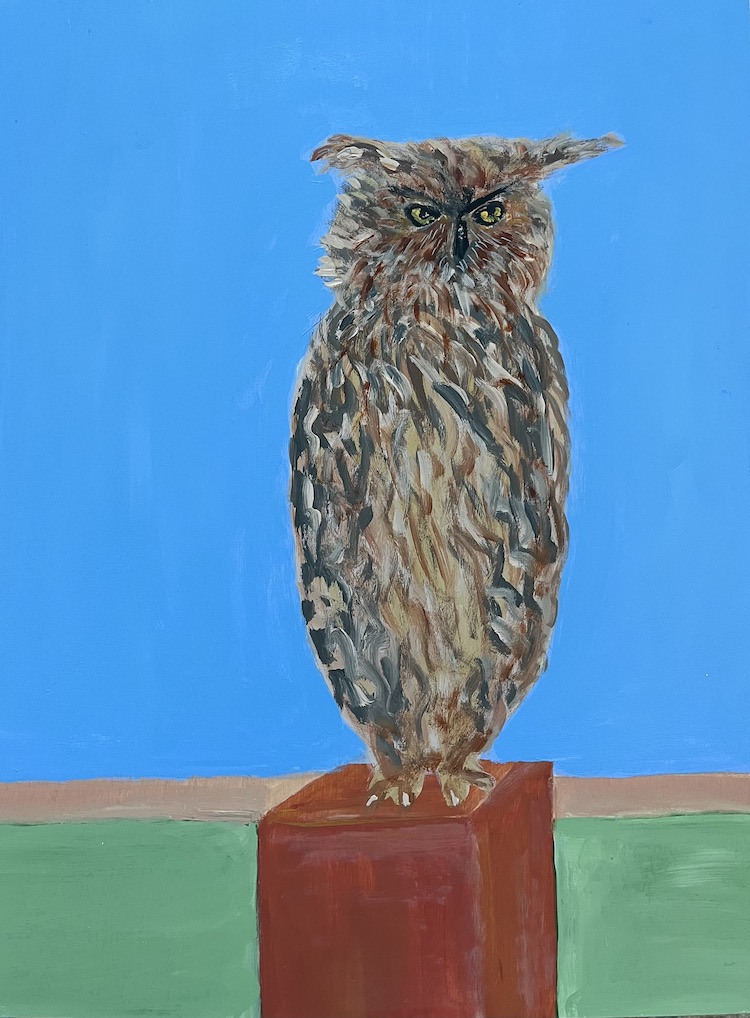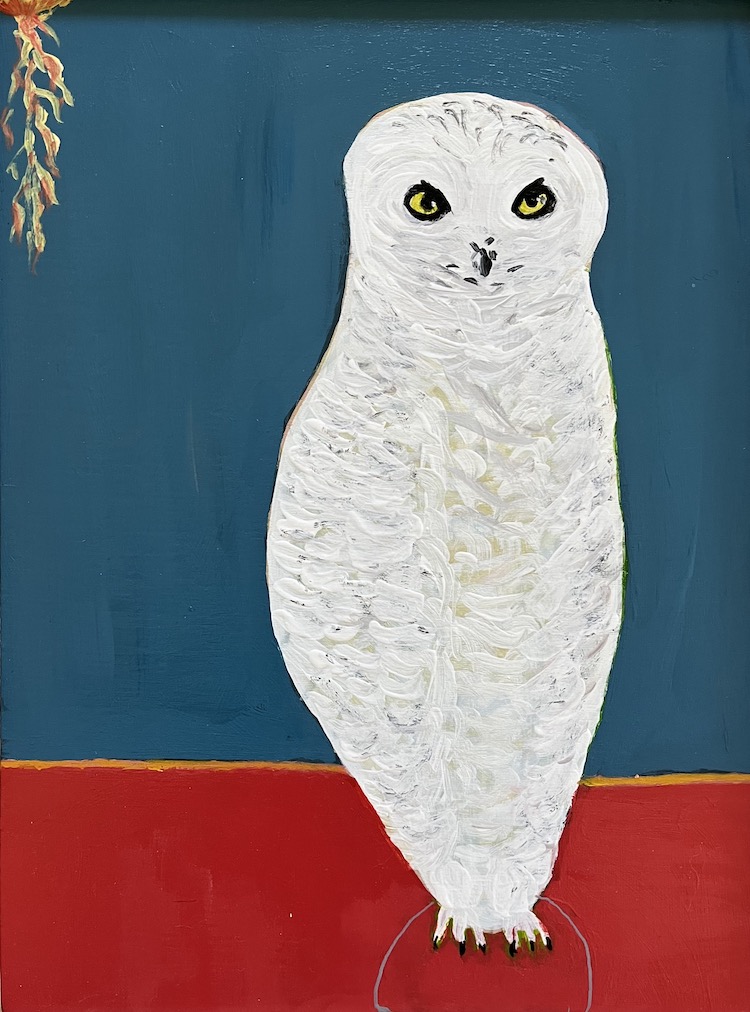Tamsin Spencer Smith exhibits over 20 paintings, all from 2023, in a pop-up show at Upper Market Gallery this coming weekend, Friday, March 24th to Sunday the 26th. Two primary styles comprise the work, one utilizes a loose painting method that purposely obliterates literal reading of the composition, yet which retains shapes and forms to advance verisimilitude; and, another that presents seemingly naive, figurative paintings, many made in entirely flat rendering of interior scenes. At the opening, Smith will augment the visual presentation with an offering of her poetry, in a limited edition of 50 hand-bound chapbooks, each with an original painting on the cover.
Smith’s aesthetic in both the visual and verbal platforms raises the question of how the discipline of poetry intersects and compliments her visual practice. Kenneth Patchen and Lawrence Ferlinghetti interspersed words in their paintings making the connection rather straightforward. In Smith's case, it is more about the emotional quality of the work, how inspiration is manifest and the overall poetic sensibility achieved.
Smith writes poems the way she paints. With painting, she typically plays with the materials: pigment and brushstrokes that embark on an unplanned and expressive meandering path that doesn’t have a specific resolution in mind. With poetry, Smith might begin with a word prompt or even a phrase or incident for inspiration; it’s a way to simply begin writing. Slowly, as the materials take shape on the canvas or page, intentionality and express decisions start to take a prominent role. Each ultimately bears its own rhythm with the final product being an amalgamation of accident and choice.
There’s a chaotic yet intrinsic quality to some of the best paintings here, particularly the smaller oil on canvas works “Entrance,” “Field,” “Journey,” and “Creation.” They begin as untidy, yet cohere with purpose. Smith isn’t precious about keeping the first passes. What might seem like messiness is simply what happens during a process of surprise and discovery. Words and paint will behave the way they want when untamed, but a phase of adjustment, editing, and refinement make them calculated. Expressionism gives way to a deliberate balance. It is this process of allowing the materials to create a foundation that ultimately leads Smith to a place she couldn’t have first imagined.
Impressionism taught us how irregularly painted objects could still evoke realism. Smith pushes the dissolution to the point closest to losing the image in an atmospheric quality of reality. Whether it’s splatter, smear, or the haphazard mixing of paint loosely; she rejects certainty in the hopes of better approximating feeling. Smith's paintings are open enough to allow for interpretations but still adhere to some element of realism. Objects and shapes work both non-objectively and as approximations of reality. Where texture is visible, brushwork gives shading, and colors are expressive. Hard lines are not equally prominent, edges vary from hard to soft and obliterate borders. There are numerous distinctive value changes, light and dark contrast, which further enrich the compositions.
The seeming absence of control gives these abstract paintings a barbaric or primitive quality, an anti-realism even. The lack of linearity releases outcome expectations for Smith; while the disintegration of edges lets the viewer's mind seek visual answers. In loose painting, margins are lost and the resulting blurring of paint offers the visual ambiguity that merges both abstraction and shape oriented realism.
Smith is celebrating the unintentional and accidental aesthetic that can result from this emancipation. By activating sensory guides, we aren’t left with solely a visual experience. This may be where poetry and painting meet: sensible words themselves, just like realistic visual compositions, cannot encapsulate an entire experience. Eliminating or blurring the lines between tight renderings evoke sensibilities that cannot otherwise be communicated.
Some of the other paintings in the exhibition, which are literal presentations of living spaces, are idiosyncratic and convey something quite personal, particularly “Being,” “Curiosity,” “Reflection,” and “Openness” (all acrylic on wood panel). They are characterized by soft colors, sometimes a pastel variety, a flattened paint surface, and graphic forms emphasizing a discernable line that demarcates forms. They are individual, and even private, in so far as they present and blend aspects of Smith’s own life with staged or imagined subject matter. They manage to convey the familiar without necessarily being so.
These paintings are mysterious, but not because they rely on ciphers, rather they offer enigmatic personal narratives and interior spaces that give way to more expansive areas outside of the painting's four corners. Quirky or even naive, they show Smith painting in a different form, just as a novel (which Smith has published) is different from poetry. They are an opening to a different part of her personality, and convey lightheartedness and an almost insouciant impression. A cat standing in a box, a picture of a stool and lightbulb, a dripping paint can, and other subtle subjects lend reflections on how we project ourselves onto our living spaces.
These more realistic paintings are done on wood panels which allows Smith greater control over her materials. The surface is untreated, meaning not gessoed, which lets the tooth of the wood adhere better to paint. Smith often will scrape away the freshest coat of pigment while it's still wet, revealing the dried paint underneath. Though only intending to eliminate the top layer, the effect of this new engagement with what had previously been abandoned, presents unexpected possibilities.
There is always a tension in an artist's work between the process of making art and what it looks like when declared complete. Painters are acutely aware that judgment will be based on the latter, yet it is the process that is most revealing about the personal and emotional voyage each artist embarks upon. The finished painting, as a result, can feel underwhelming to the person who created it. Not because it doesn’t work as an aesthetic object, but rather, because the passage was far more exciting and the painter knows this. Tamsin Smith is very much this kind of painter; the ending is but a small part of a voyage that meant something deeply to her. Where she lands is strong, but how she got there is even more compelling. Fortunately, enough visual clues survive in the final composition to let the viewer share part of that exultation. —Matt Gonzalez



